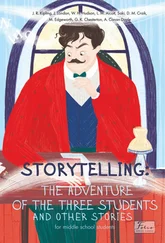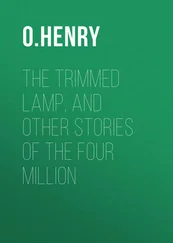Later he was criticized for his extravagant and inappropriate training methods. He even wondered himself, for a moment, if he hadn’t gone too far.
But for him it was a point of honor to maintain a superior indifference. The game of realism, by its very nature, neutralized everything. Even invention, to which the scattered drops had devoted themselves with a passion, had a retroactive effect on realism. It might have been said that in each of its avatars, invention was writing itself with a drop of ink and an obsessive attention to plausibility. Each drop was self-contained, thanks to the delicate balance of its surface tension. There was no context, just pure irradiation.
The drop had neither doors nor windows. History had countless generative tips. A certain drop, virginal and vaginal in equal parts, had, by a miracle of naptime surgery, undergone gender reassignment and adopted the name Aureole. Initially his name had been Dr. Aureole. Due to a suspension, Aureole was left hanging in the air. .
The suspension gave rise to a sublime romanticism: Aureole, in a nightgown, on the balcony of her little castle, overlooking a dark garden alive with the sounds of insects and fountains, lost in her reverie, her spidery weaving. The castle was in flames, but the fire was suspended too. The drop was in another dimension. It could only have happened to her: another display of indifference, made plausible by the devices of realism.
Suddenly, on a third level of the story, three cloaked figures dropped from the eaves and the drainpipes, landing all at once on the balcony. Torn from her reverie, Aureole began to spin, squealing in distress. She tried various falling movements to escape from the gloved hands of her attackers, but it was as if she were floating on mercury. All she succeeded in doing was to make them tear her nightgown and mess up her hair. Working as a team, the three figures thrust her, terrified and tearful, into a box, which closed with a resonant clack. The crowd that had gathered around the castle to watch the fire saw nothing of this maneuver, and the firemen busy extending their ladders like pirates boarding a ship saw even less. The kidnappers took advantage of the confusion to escape with their captive; a car was waiting for them on the other side of the moat. They traveled through the hills for a long time, and before the moon rose they came to the gardens of an abandoned country house. They entered the house through the back door and shut the prisoner in the cellar.
Only then did they relax and take off their hoods. They were a trio of dangerous criminals: Shower, Hose, and Faucet. For many years they had been plotting to kidnap a drop. Chubby, hoarse, chrome-plated, they danced about on the table like Maenads, making metallic noises, drank a bottle of cognac, and called Gravity on the telephone to demand a ransom.
Ring. . ring. . ring. .
The sound of the little bell reverberated throughout the mountains. The echo carried it from peak to peak, creating a kind of succession.
The documents relating to the case were published by Drop Press. Pocket museums had become a possibility, thanks to technical progress in photography and printing. Here a flashback to an earlier part of the story is needed to complete the “picture.” The Mona Lisa is, as it happens, the emblem of the mechanical reproduction of the work of art (whether by photography, printing, or digital media). The merits of this splendid portrait are not to be denied, but it’s important to recall some of the historical events that propelled it to the position of supremacy it occupies today. There are other portraits of women by Leonardo that could perfectly well have stolen the limelight. There’s the portrait of Cecilia Galleriani, the Lady with an Ermine , which more than a few critics have praised as the most beautiful ever painted, the most perfect. Or the portrait of Ginevra de’ Benci, that childlike woman with her severe, round face. Neither is lacking in the mystery that stimulates the imagination. . What, then, explains the incomparable popularity of the Mona Lisa ? It so happened that throughout the nineteenth century, as tourism began to develop and the books that would establish the canon of Western art were being written, the Mona Lisa was on display in the Louvre for everyone to see, while Cecilia and Ginevra were languishing in obscure collections in Krakow and Lichtenstein.
The theft of the Mona Lisa in 1911 put the picture on the front pages of the newspapers, just when photography and printing were making it possible to reproduce works of art on a massive scale. The news story had natural flow-on effects, and the Mona Lisa , reproduced ad infinitum, became an indestructible icon.
But there was something more, another new development in civilization, which contributed to the process: the invention of the global news story. Just when journalism had reached its industrial maturity, two events occurred within a few months of each other that justified that maturity and brought it to fruition: the theft of the Mona Lisa and the wreck of the Titanic . Both events instituted a myth. Because these stories were the first of their kind, they were the biggest and the most productive. All the rest were condemned to operate within a system of substitutions. It was pure poetic justice that one of the Mona Lisa ’s runaway drops should set up a news agency, and precisely in China, humanity’s great neural puzzle.
The DropToday agency specialized in the hunt for the new Grail, the greasy golden seal’s head that had begun to think for humans. There was a lead to follow: the spectacular melodrama of Gravity, who was wandering through the deserts of the world after leaving the Pope at the altar, dressed as a bride, holding a suppository. Gravity himself was impossible to follow, but his movements could be calculated using geographical logarithms. He also left a trail of slime. Laboratory tests revealed that this slime was principally composed of an organic substance, newtonia, whose cells could expand in response to sexual desire. The expansion was practically unlimited and the discovery of the cell membrane’s flexibility and strength revolutionized the textile industry. From then on, the substance was used to make shirts for basketball players, who kept getting bigger and taller.
Sparky, the funny drop, became a humorist. He strung together a bunch of old jokes and got up every night in a bar in Baden Baden adjoining the casino to run through his routine. He was slotted in between a pair of sopranos and the Sensitive Steel Robot, and the master of ceremonies presented him as “the funniest drop in the world.” The jokes were terrible, but the comic effect was produced by the contrast between his diminutive size and his stentorian voice, between his helpless condition as a drop, easily squashed by a fingertip, and the way he fancied himself as a Don Juan, eyeing off the fat ladies of the nomenklatura , who had come to the spa town to blow the rubles that their husbands had squeezed from the udder of Soviet corruption. Even before he opened his mouth, his look assured him of a certain indulgence: the top hat, the close-fitting dinner suit, the monocle, the cane, all adapted to his spherical form, without arms or legs. Quite a few members of the audience would gladly have bought a reproduction, to take home as a souvenir.
The season at the casino lasted three months. The rest of the year Sparky hibernated in a log cabin in the middle of a forest, leading the life of a hermit, without servants or neighbors. Like so many humorists, he was a melancholic and a misanthrope. The telling of jokes exhausted his humor and left him feeling bitter and empty. He would have liked to call himself Sparky, the Drop of Gall. He used the same jokes year after year, as if to see how long they’d go on getting a laugh, although they were tattered and shabby, falling apart from the wear. They appeared before his eyes at night, trying to scare him, floating over his canopied bed. And when they realized it was no use, they slipped away to the wasteland, sighing.
Читать дальше












